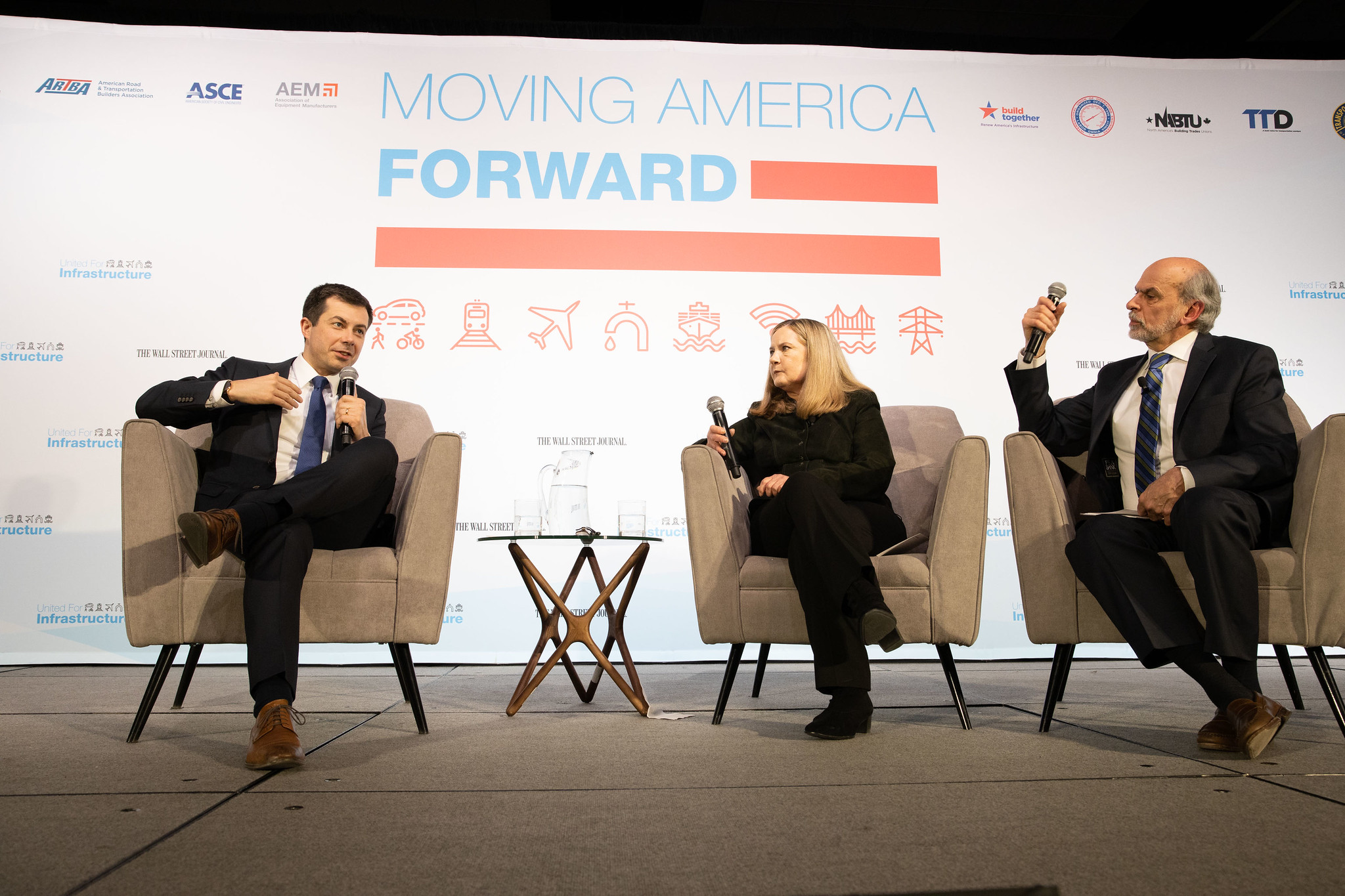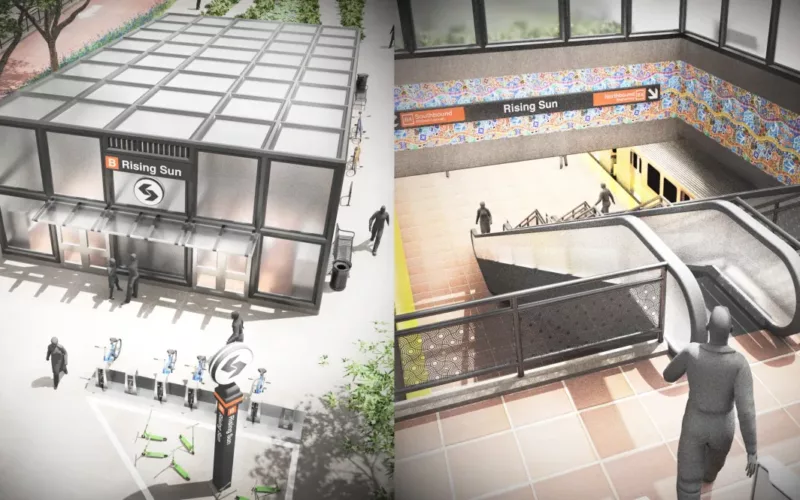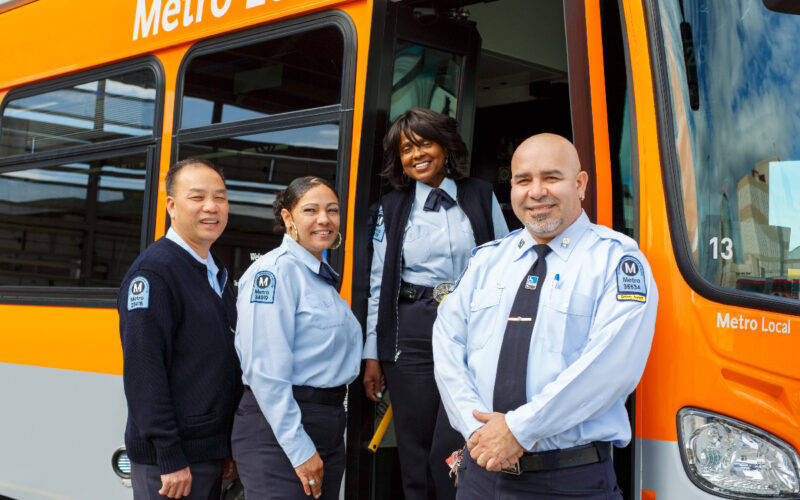
The infrastructure package gives significant spending discretion to USDOT and Transportation Secretary Pete Buttigieg, shown here during the 2020 presidential campaign.
With President Biden signing the infrastructure bill this week, transit agencies and departments of transportation around the country are already laying out how they plan to repair, upgrade, and expand transportation networks. The legacy of the bill depends on the choices those agencies make.
If this wave of federal funding goes to the usual assortment of road expansions, with a few hit-or-miss transit projects tossed in, it will further entrench inequality and carbon pollution in the U.S. transportation system. But if the funds consistently support transportation initiatives that expand access to good transit, make streets safer for walking and biking, and repair infrastructure without generating more car traffic, it can set American transportation on a greener, more equitable trajectory.
This infrastructure package is much bigger than the typical federal transportation bill. On top of increasing the baseline five-year allocation for roads and transit 34% — to $303 billion — the package dedicates an additional $39 billion to local transit agencies and $110 billion to highway programs (though as we’ll see, much of the “highway” money is flexible and can be put to other uses).
As organizations like Transportation for America have noted, the bill does not meaningfully reform a federal system which allocates the bulk of resources to state DOTs that view highways as the solution to most problems. It’s up to the public — and reformers inside government — to mobilize for good projects and prevent bad ones.
This post provides a brief overview of the policy terrain at each level of government now that the bill has become law.
At the local level, steering transit agencies and city DOTs to make good investments is the big task. And the local landscape is where the prospects for reform look brightest.
Consider the shifts that have taken place since President Obama signed the 2009 stimulus bill. The importance of providing networks of frequent transit service is more widely understood today, and new tools are available for transit agencies to evaluate the equity of their networks. DOTs in several major cities have gained experience designing streets to prioritize transit. Newly elected mayors like Michelle Wu in Boston and Justin Bibb in Cleveland bring a heightened awareness of transit’s importance because they ride transit themselves.
The elements should be in place to make transit improvements that connect lots of people to jobs, schools, stores, and everywhere else they need to go. But will local agencies receive the resources they need to advance these priorities?
The Biden infrastructure package continues to funnel most transportation funds through state governments, not local agencies. And many state DOTs remain wired for highway expansion.
A recent investigation by the LA Times found that in the past 30 years, highway projects have displaced more than 200,000 people from their homes nationwide, imposing “a second round of dislocation and disruption on largely Black and now Latino communities as well.” Projects like Texas DOT’s looming I-45 expansion threaten to displace more families, generate more traffic, and spew more carbon and other pollutants into the air.
Fighting these projects will continue to be a major arena for transportation advocacy, and local residents will need support from the feds — USDOT can’t be a bystander. The agency’s civil rights investigation of the I-45 project is a promising development. If it’s the harbinger of a consistently muscular approach to fending off highway expansions, that’s cause for optimism about the long-term legacy of this new infrastructure package.
Like previous transportation bills, the new law also allows states to “flex” funds from highway programs to transit. The question is whether governors and other elected leaders can be persuaded to do so. Historically, few states take advantage of this provision. But the political landscape is always shifting, and every opportunity to convince a governor to shift resources from highways to transit should be pursued.
At the federal level, USDOT emerges from the infrastructure saga with more influence than before.
One notable departure from previous practice is the large amount of funding — more than $100 billion over five years — that USDOT will be able to award at its discretion, instead of distributing according to predetermined formulas.
Through its choices of which projects to fund, USDOT sends cues that shape the spending decisions of state and local transportation agencies. Through its power to regulate and set standards, the agency can influence everything from street design to the cost of capital construction.
If USDOT structures its grant programs, rules, and incentives well, the agency can help cities make huge progress on equitably expanding access to good transit service.
Stay tuned: In future posts we’ll explore in greater detail how the infrastructure bill creates new possibilities for change.
 To Achieve Justice and Climate Outcomes, Fund These Transit Capital Projects
To Achieve Justice and Climate Outcomes, Fund These Transit Capital Projects
Transit advocates, organizers, and riders are calling on local and state agencies along with the USDOT to advance projects designed to improve the mobility of Black and Brown individuals at a time when there is unprecedented funding and an equitable framework to transform transportation infrastructure, support the climate, and right historic injustices.
Read More New Drug Testing Rule from USDOT Could Help Alleviate the Bus Operator Crisis
New Drug Testing Rule from USDOT Could Help Alleviate the Bus Operator Crisis
New drug testing rules from the USDOT could make it easier for transit agencies to recruit more operators - but only if they implement the rule.
Read More